As with just about any system, Japan has a lot of interesting items that are either unreleased or have very limited availability anywhere else.
Note that this page does not contain every single Japan-only release, just the more notable ones.
Footage of these games can be found on my YouTube Channel as part of my A Look at Imports series.
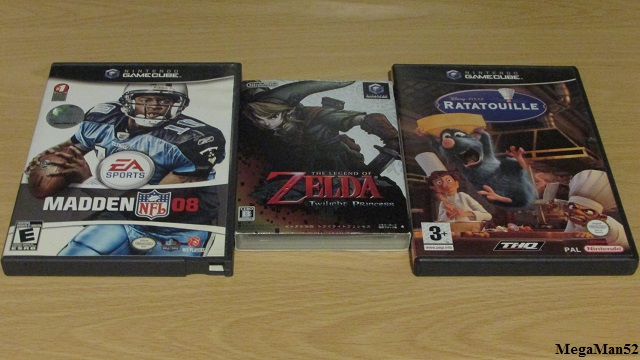
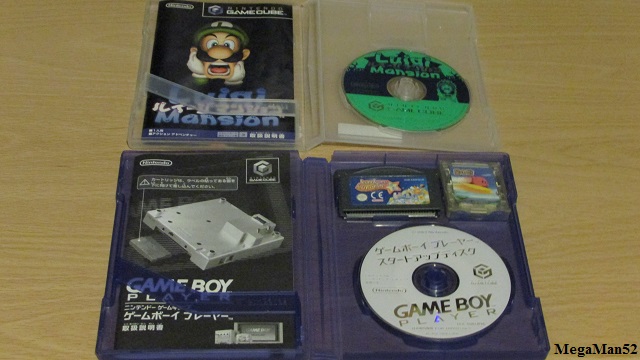
Japanese GameCube games use much smaller and more compact cases. The American Game Boy Player Start-up Disc uses the same case. However, the Japanese Game Boy Player Start-up Disc has a blue case that also includes a slot for a Game Boy Advance cartridge.
Nintendo Puzzle Collection
A compilation containing Dr. Mario, Yoshi's Cookie, and Panel De Pon. The version of Dr. Mario here is actually the same as the N64 version (Dr. Mario 64), with Japanese text. A little more interesting, though, is Yoshi's Cookie which is a completely different version for the GameCube with new graphics, remixed audio, and a 4-player mode. These games play identically to their NES and SNES counterparts, and are great if you're looking to add Puzzle games to your GameCube collection.
Nintendo Puzzle Collection has Game Boy Advance connectivety. You can use a GBA as a controller, and download the NES versions of Dr. Mario and Yoshi's Cookie. Some copies of the game include a GameCube Game Boy Advance cable.
PC Genjin
This is Bonk's Adventure for the GameCube. It is essentially a remake of the original for the Turbo Grafx-16 and NES. Unlike a lot of remakes, though, this one is true to the original in many ways, including even the graphics. While the characters and enemies are in 3-D, the levels are all 2-D and side-scrolling. Music has been remixed as well and Bonk himself has an angrier appearance. Otherwise, this is basically just like the Bonk's Adventure for the NES.
Playing through the game will unlock extra difficulty settings, as well as commercials of other Bonk's Adventure games.
Takahashi Meijin no Bouken
If you don't know who that is, it is Master Higgins from Adventure Island. As with Bonk's Adventure, this is basically a remake of the first Adventure Island. Unlike Bonk's Adventure, this one is almost completely 3-D (characters and levels). Also, this game is a little more than just a remake. Many levels have different layouts. There are more kinds of fruits. Some of the levels have new music. On the other hand, the gameplay is virtually identical to the NES version: grab fruit to stay alive, use weapons to defeat enemies, ride a skateboard to move faster, find a bee for invincibility....and make your way through some of the hardest levels of ANY video game. The game's difficulty is almost as challenging as the NES version.
Speaking of Challenges: there is a Challenge mode where your goal is to make it through the levels as fast as you can. There is even an option to go through every single level in the game, without any lives or continues!
Grabbing fruit and scoring 90% or more in levels unlocks several extras, such as the Hudson Shooting Watch, commericals of the NES Adventure Island games, and even an option to switch the game's soundtrack to that of the NES verison of Adventure Island. Definitely one of the better Japanese-exclusive releases on the GameCube.
Controllers, demo discs, pre-order extras, you name it. Japan has numerous items that haven't been released anywhere else.
Accessories
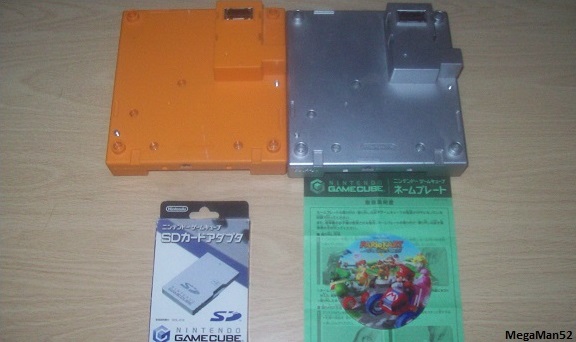
Various accessories were made available at retail and through promotional offers in Japan. While a black Game Boy Player is available Worldwide and an Indigo Game Boy Player is available in Australia, the Platinum and Spice orange colors are exclusive to Japan. An SD Card and Adapter, announced and shown in magazines in 2001, eventually came out in Japan only in 2003.
Other items were released through promotional offers, such as Club Nintendo. The original DOL-001 model of the GameCube can be customized with different faceplates, which include Mario Kart: Double Dash!!, Animal Crossing, and others (a Metroid Prime faceplate came out in North America). Limited edition Memory Cards and Mario, Luigi, and Wario controllers were available through Club Nintendo, as well as a white controller with the Club Nintendo logo.
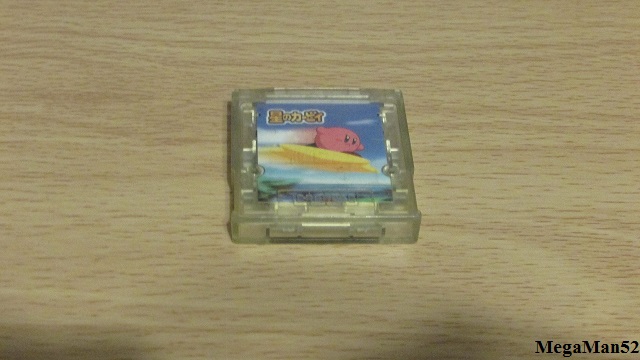
A Kirby Memory Card 251 from Hori, the same company that made the Game Boy Player Controller.
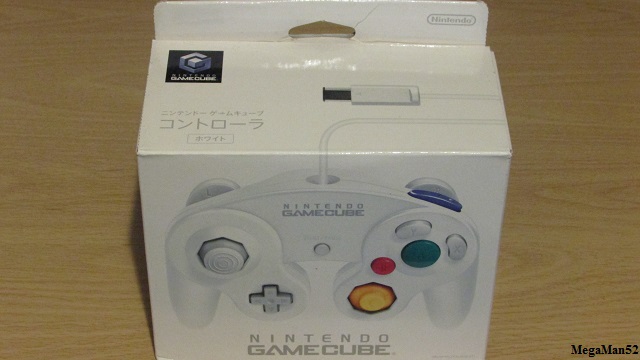
A Standard Controller released in 2008. Unlike the Super Smash Bros. Edition Controller released in 2014, this Controller was actually marketed as a GameCube accessory rather than Wii or Wii U. Like the Smash Bros. Controller, though, it has a longer cord than the original set of Standard Controllers.
Demo Discs
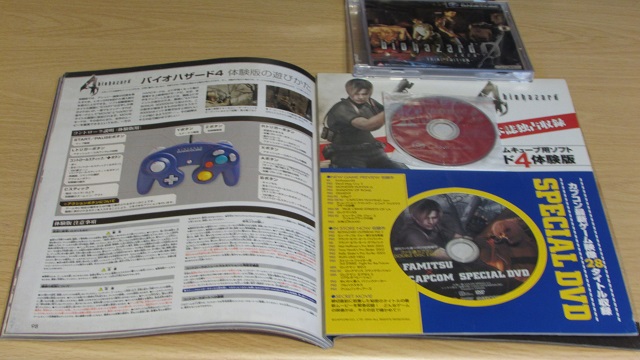
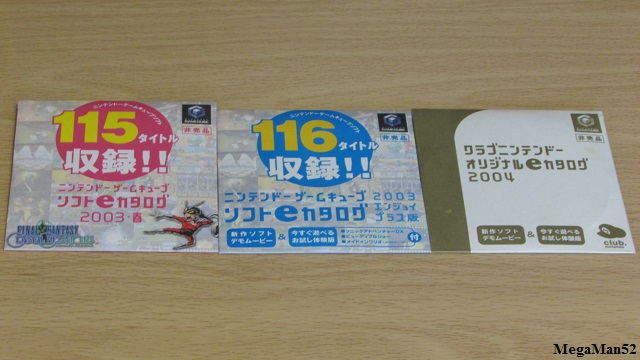
Different than demo discs used at stores, these are discs that were sold to consumers for a limited time. Capcom sold a Biohazard Zero: Trial Edition disc in 2002, giving Japanese gamers a chance to play an earlier and slightly different version of the game before it was released. A Biohazard 4: Trial Edition disc was included with an issue of Famitsu magazine. It contains some unique trailer videos and a later demo that is much closer to being like the final version compared to the demo in the Resident Evil 4 Preview Disc released in America (which is similar to the demo that was shown at E3 2004). In 2003, Nintendo released two "Software Catalog" discs that include a listing of every game released for the console in Japan up to the Summer of 2003, as well as screenshots, videos, and demos. The one with the red cover was included with Pokémon Box. The one with the blue cover is an updated version with even more demos, screenshots, videos, and some GBA Connectivity content for Sonic Adventure DX. It was included with some of the "Enjoy Plus Pack" GameCube bundles (which also included a Game Boy Player). The disc with the gold cover, released in 2004, was available through Club Nintendo. It contains mostly screenshots and videos of GameCube, Game Boy Advance, and Nintendo DS games, but also has a Naruto: Clash of Ninja 3 demo.
Pre-Order Extras
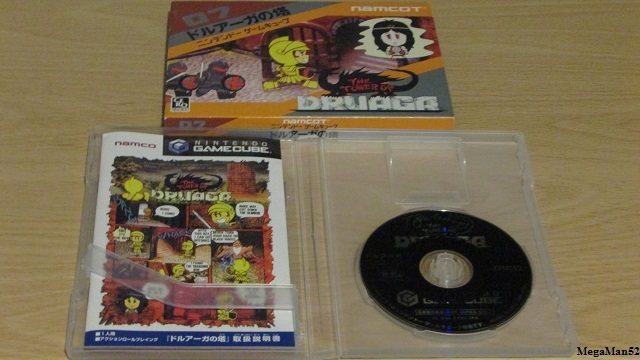
In 2003, anyone who pre-ordered Baten Kaitos in Japan was given this disc containing an emulation of one of Namco's earlier games: The Tower of Druaga for the Famicom (NES), with a slipcover that looks similar to the box for the original Famicom game.